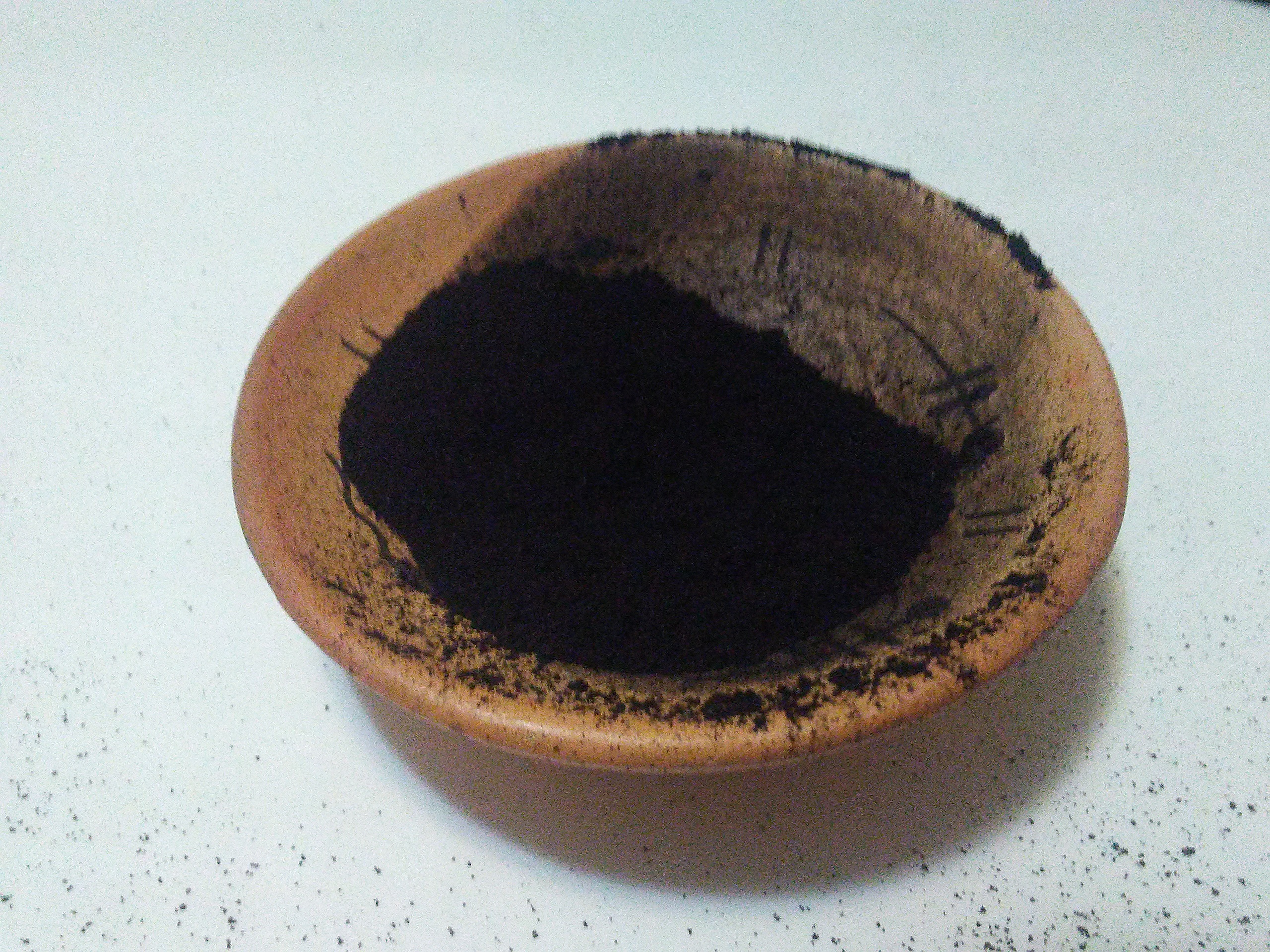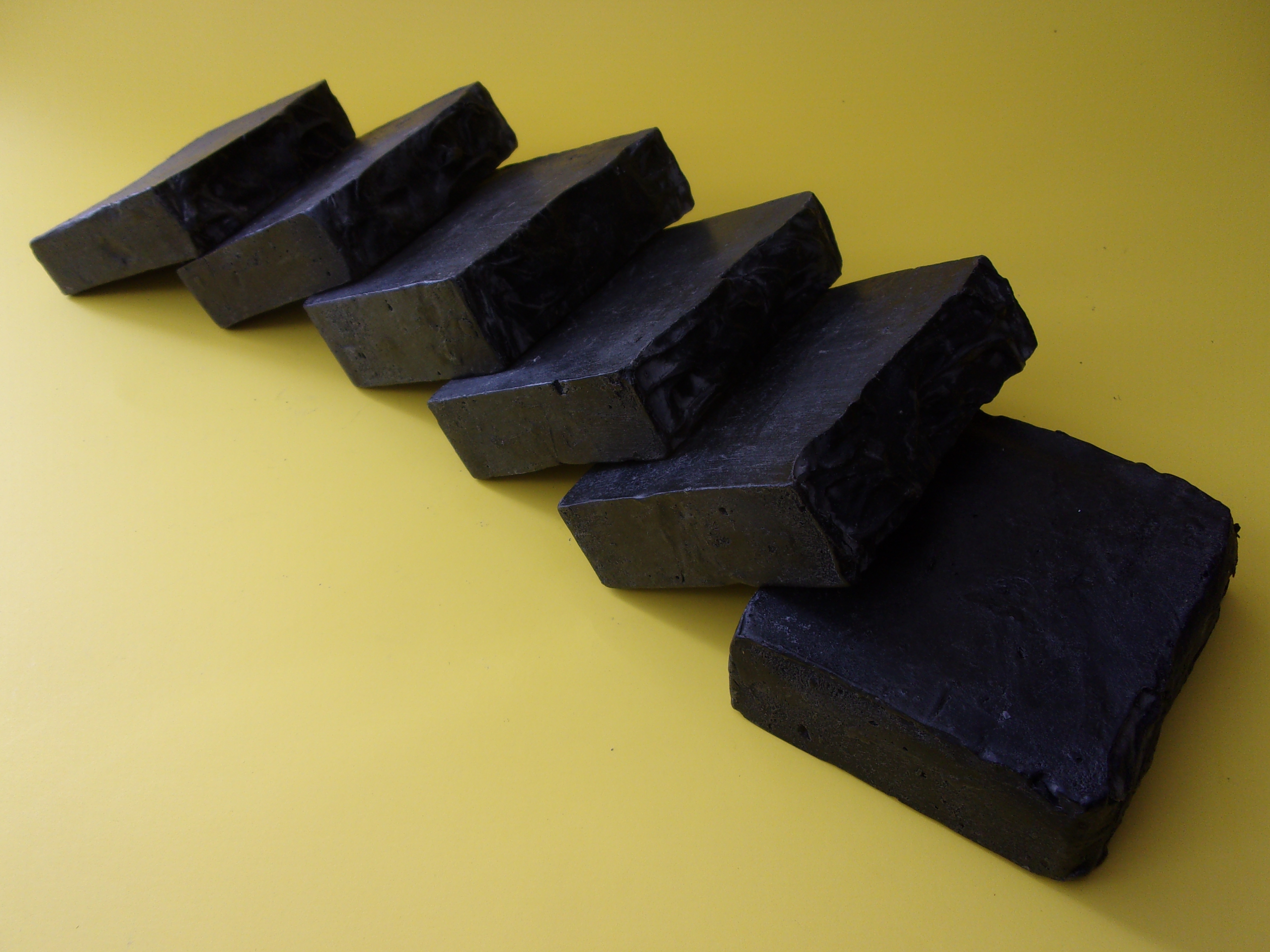Activated Charcoal Soap Recipe

This Activated Charcoal Soap Recipe will give your soap the adsorbent qualities of activated charcoal.
The term 'adsorbent' for activated charcoal is it's ability to allow toxins and dirt to stick to its surface. An example analogy would be the surface of a wet lolly-pop.
This is in opposition to the term 'absorbent' where the substance will take in, suck-up and assimilate toxins and dirt unto itself. A good example of absorbent would be a cotton ball or sponge.
Soap has a routine ability to lift-up and wash away bacteria. When you combine activated charcoal's enhanced porousness and adsorbent sticking ability, you have a robust and powerful hand washing soap. There is one surprising result that I've discovered after making this soap. Those results can be found at the bottom of this page.
How is Activated Charcoal made?
The industrial gas process of “activating” charcoal in general terms consists of two parts.
The first part is heating materials such as nutshells and many others to a temperature of 900+ degrees Fahrenheit. This is done in an absolute vacuum and will create an abundant number of microscopic pores in the material. The second part of the gas process is to steam the materials to 1800+ degrees Fahrenheit to complete the "activation" of the charcoal.
Which Oils And Fats Should I Use For My Activated Charcoal Soap Recipe?

a. OILS. To make this soap we have used 5 different oils and fats combined for various soap properties that are beneficial. Here is the list of oils with their percentage amounts only. The oil amounts are not listed due to the batch size variations.
1. Olive Oil - - - - - - - - - - -50%…………...X.X oz.
2. Lard - - - - - - - - - - - - - -30%……...…...X.X oz.
3. Coconut Oil - - - - - - - - 10%……...…...X.X oz.
4. Canola Oil - - - - - - - - - - 5%….....…….X.X oz.
5. Castor Oil - - - - - - - - - - -5%.....……….X.X oz.
Total of 5 Oils used = 100% = X.X oz.
b. LYE Amount = X.X oz.
c. H20 Amount = X.X oz.
d. ADDITIVES: Activated Charcoal - Use 1% or less of the Total Oil Amount which is equal to = X.X oz.
Activated Charcoal Soap Recipe by the numbers.
This Activated Charcoal Soap recipe calls for 5 oils: Olive Oil, Lard, Coconut Oil,
Canola Oil and Castor Oil. The seven soap attributes are left blank for you to experiment with your own percentage numbers for different outcomes using the Soap-Calc.
1. Hardness of ( ).
2. Cleansing Capabilities at ( ).
3. Conditioning Qualities are at ( ).
4. Bubbly number is ( ).
5. Creamy number is ( ).
6. Iodine is at ( ).
7. The INS number is at ( ).
So what do all these numbers mean? Well, with these numbers we can compare our soap recipe numbers with the 7 optimal number ranges from the Soap-Calc.
Compare this Recipe to Soap-Calc optimal ranges.
1 Hardness. Best range is between (29 – 54). The higher the number the harder the soap bar will be. We had ( ) which is a soft bar of soap. It is within the acceptable range.
2. Cleansing. Best range is between (12 – 22). The lower the number the more mild the soap. Our number is ( ). This means that our soap will be very mild on the skin.
3. Conditioning. Best range is between (44 – 69). The higher the number the more soothing and softening to your skin. We have a number of ( ) which is on the higher end of the acceptable range. This means our soap is really softening and soothing to the skin.
4. Bubbly. Best range is between (14 – 46). Higher numbers in this category equate to more bubbly lather. Our Bubbly number is ( ). This is on the lower end of the lather scale but still within the acceptable range.
5. Creamy. The best range is between (16 – 48). The higher the number the more lather you will have. Our Creamy number is ( ). This is going to be a good lather soap.
6. Iodine. The range here is anything (under 70). If your number is (under 70) the soap will not go rancid. Our number is ( ). It’s right on the line so it should be fine and not go rancid.
7. INS. The best range here is between (136 – 165). The lower the number the more moisturizing the soap will be to your skin. We have the number ( ). This is on the lower end and that’s great. That means our soap bar will be a nice moisturizing soap.